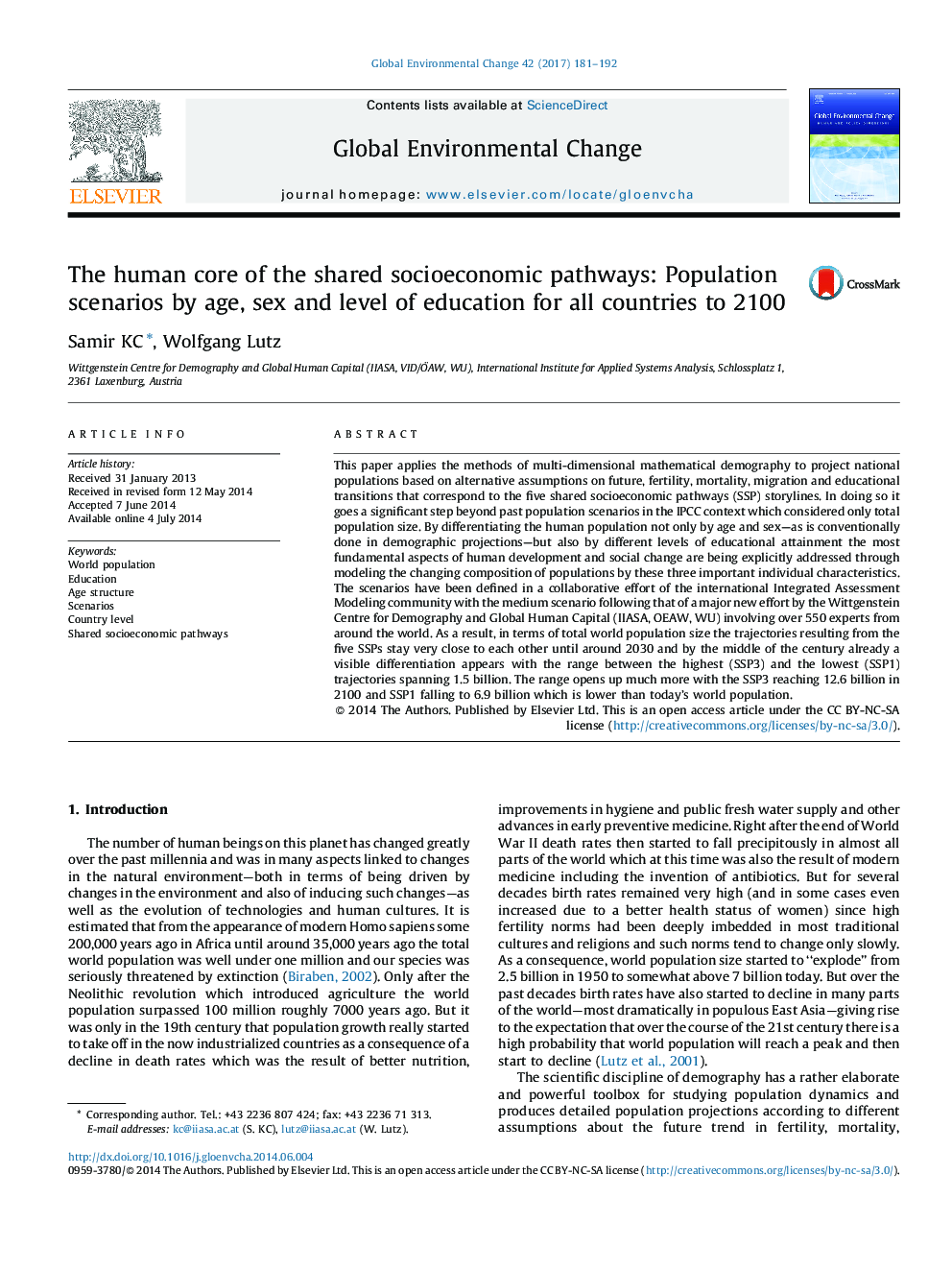| کد مقاله | کد نشریه | سال انتشار | مقاله انگلیسی | نسخه تمام متن |
|---|---|---|---|---|
| 5115989 | 1485116 | 2017 | 12 صفحه PDF | دانلود رایگان |
عنوان انگلیسی مقاله ISI
The human core of the shared socioeconomic pathways: Population scenarios by age, sex and level of education for all countries to 2100
ترجمه فارسی عنوان
هسته انسانی مسیرهای اجتماعی-اقتصادی مشترک: سناریوهای جمعیتی بر اساس سن، جنس و سطح تحصیلات برای همه کشورها تا 2100
دانلود مقاله + سفارش ترجمه
دانلود مقاله ISI انگلیسی
رایگان برای ایرانیان
کلمات کلیدی
جمعیت جهان، تحصیلات، ساختار سنی، سناریوها، سطح کشور، مسیرهای اجتماعی و اقتصادی مشترک،
موضوعات مرتبط
علوم زیستی و بیوفناوری
علوم محیط زیست
علوم زیست محیطی (عمومی)
چکیده انگلیسی
This paper applies the methods of multi-dimensional mathematical demography to project national populations based on alternative assumptions on future, fertility, mortality, migration and educational transitions that correspond to the five shared socioeconomic pathways (SSP) storylines. In doing so it goes a significant step beyond past population scenarios in the IPCC context which considered only total population size. By differentiating the human population not only by age and sex-as is conventionally done in demographic projections-but also by different levels of educational attainment the most fundamental aspects of human development and social change are being explicitly addressed through modeling the changing composition of populations by these three important individual characteristics. The scenarios have been defined in a collaborative effort of the international Integrated Assessment Modeling community with the medium scenario following that of a major new effort by the Wittgenstein Centre for Demography and Global Human Capital (IIASA, OEAW, WU) involving over 550 experts from around the world. As a result, in terms of total world population size the trajectories resulting from the five SSPs stay very close to each other until around 2030 and by the middle of the century already a visible differentiation appears with the range between the highest (SSP3) and the lowest (SSP1) trajectories spanning 1.5 billion. The range opens up much more with the SSP3 reaching 12.6 billion in 2100 and SSP1 falling to 6.9 billion which is lower than today's world population.
ناشر
Database: Elsevier - ScienceDirect (ساینس دایرکت)
Journal: Global Environmental Change - Volume 42, January 2017, Pages 181-192
Journal: Global Environmental Change - Volume 42, January 2017, Pages 181-192
نویسندگان
Samir KC, Wolfgang Lutz,
